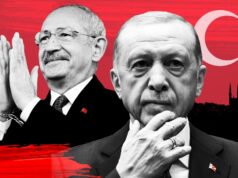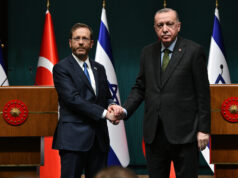Explosions rocked the city of Damascus on Thursday after alleged members of Syria’s opposition group detonated a bomb at the Justice Palace, injuring three people. Gunmen possibly affiliated with the rebels also stormed a pro-government television station close to the capital the previous day, killing 7 journalists. The violence forced Asad to declare a “state of war” in Syria, as these newest attacks bring the war to his front doorstep while he simultaneously attempts to crush domestic opposition to his regime.
Syria’s civil war is pulling other countries into the conflict as well. Following an incident last week in which a Turkish plane was shot down by Syrian anti-aircraft fire, Turkey announced a recent troop redeployment to the Turkey-Syria boundary. The transfer included anti-air units designed to counter Syrian helicopters and jets. Although Syria explained that it thought the plane was Israeli, tensions along the border continue to grow. In an effort to dissuade further Syrian provocations, Turkey’s military threatened to shoot on sight any Syrian military target that approached Turkish territory. Erdogan further stated that Syria would “feel the wrath of Turkey” should Syria violate their airspace.

Bystanders witnessing the aftermath of two bomb blasts at Syria’s Justice Palace in Damascus. (Photo: AFP) |
With the region’s stability on the line, the international community announced plans to meet with “influential players” in order to end the bloodshed. The meeting will focus on installing a transitional unity government after Asad steps aside. Excluding Iran and Saudi Arabia from the conference, Russia and America will be the key players involved in the talks. The U.S. has pressed the Kremlin to help curb the violence in Syria. Unfortunately, American diplomatic efforts failed to elicit any change in Russian policy, as it continues to send helicopters to Syria’s embattled regime. Furthermore, Moscow is adamant in its insistence that transition must be voluntarily agreed to by the regime and the opposition — a scenario that is most unlikely to develop.
The situation, however, continues to deteriorate to the point that any cease fire would prove to be as hollow as the last. Already, various minorities are beginning to feel the pressure to choose a side as reports surface of Syrian Christians were expelled from their homes by Sunni rebels, illustrating the growing sectarian nature of the conflict.
To be sure, the longer the crisis continues, the worse the situation will be for the Syrian people. But without decisive action by the international community and leadership from Washington, more unpredictable situations will arise as a result, perhaps drawing in NATO on terms other than its choosing. It will force Washington and its allies to react in one form or another to circumstances that are otherwise preventable. The White House should be asking: Is it better to continue to react to a situation that promises to create additional unforeseen regional conflagrations while increasing the militancy of Islamists — or — is it better to act, assert leadership, put Moscow and Tehran on notice, and stem the sectarian slaughter? Will the Obama administration continue to be reactive? Or, will 16 months in Syria with 14,000 dead and over 10,000 arrested or detained be enough to persuade Team Obama to be proactive? Russia and Iran have already decided as the White House continues to dither.





